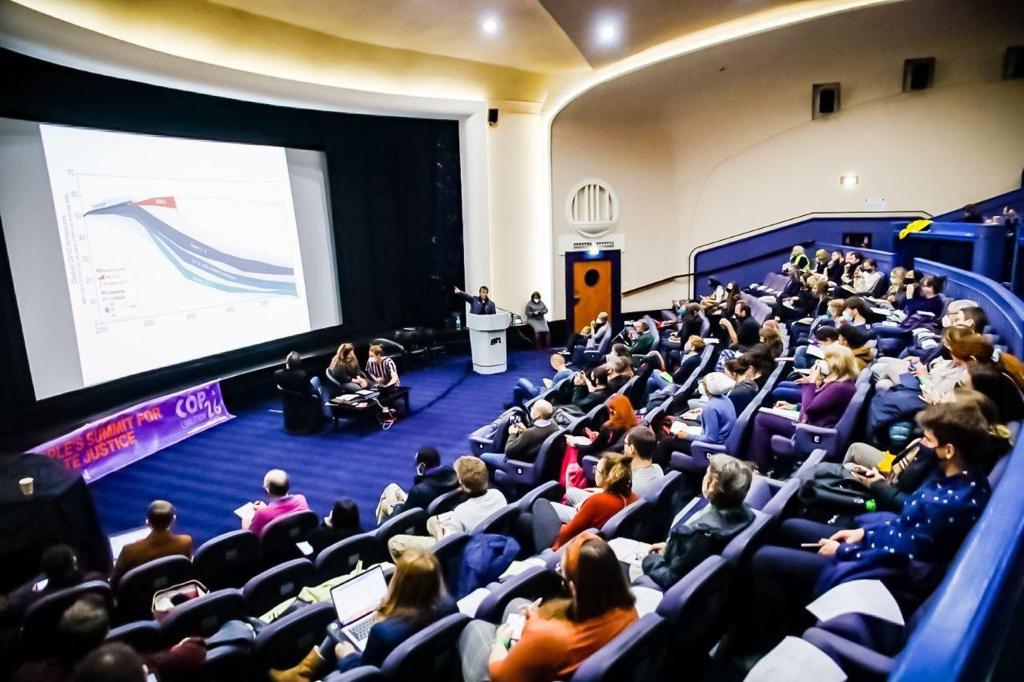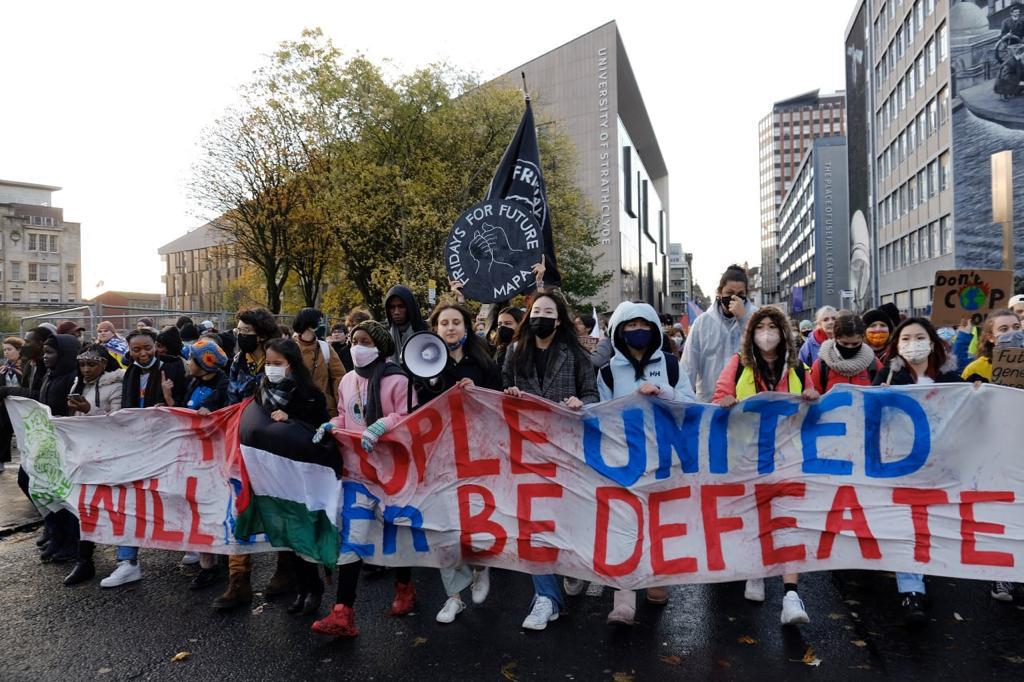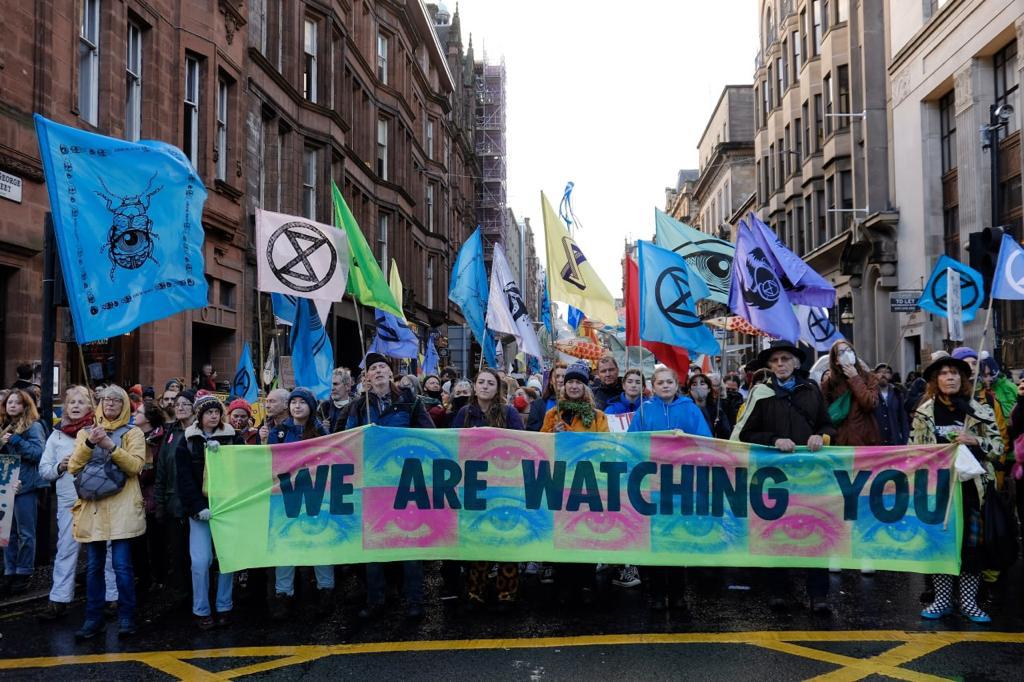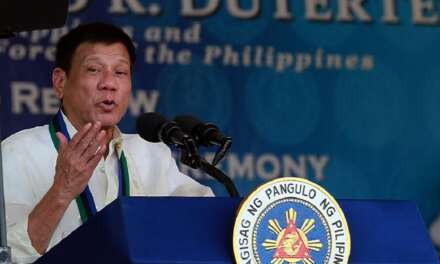
Shalmali Guttal delivering the testimony remotely at the People’s Tribunal on the UNFCC. Credit: Global Justice Now (https://twitter.com/GlobalJusticeUK)
Focus on the Global South, November 7, 2021
I. Introduction – Political economy analysis of false solutions
Despite being in the frontlines of the climate change crisis, many Asian countries have embraced false solutions and allowed the corporate capture of policies and programmes to address climate change. This is not by choice alone, but a systemic condition created by the United Nations Framework Convention on Climate Change (UNFCCC), other UN agencies such as the United Nations Environment Programme (UNEP) and the Food and Agriculture Organisation (FAO).
False solutions are those that do not actually address the problem at hand substantially but deceive people into believing that they do, while at the same time triggering other serious problems.
In the context of climate change, false solutions are technologies, projects and policies that:
-
- Do not result in actual cuts of Green House Gases emissions
- Allow countries, corporations and wealthy people most responsible for these emissions to avoid their obligations and responsibilities to cut GHG emissions
- Transfer the responsibilities of emissions cuts and climate damage on communities that depend on land, forests, seas and oceans for survival; most of these communities have already been exploited for generations and face the brunt of catastrophic climate change that they did not cause
- Generate environmental, social, economic and politicalproblems and consequences, and result in the violations of human and collective rights
- Promote privatization and commodification of ecological resources and services, and generate private profits at the expense of people, communities and the environment
- Distract people and policy makers from real solutions; and direct public financing, infrastructure and institutional support away from the actions needed for systemic changes
Examples of false solutions include: clean development mechanisms; carbon markets; carbon capture and storage; burning trees and biomass as Bioenergy; Bioenergy and Carbon Capture and Storage (BECCS); geoengineering technologies; carbon sequestration; offset schemes such as REDD and Net Zero; Green Economy and Blue Economy.
With the advance of digital technologies and financial instruments, new techno oriented market mechanisms continue to be developed. But none of these do what is required to address the climate crisis: cut GHG emissions at source; stop the destruction of eco-systems; provide the required financing and support needed for helping affected peoples to adapt and recoup from loss and damages; and urgently start the transformation away from fossil fuels based economies.
Corporations and their government and private supporters capitalize on the climate crisis as they push for so called “cost-effective” solutions to the climate crisis at the expense of poor and vulnerable communities. False solutions provide new business opportunities for a privileged minority to continue to exploit nature and accumulate wealth, with no responsibilities for the negative consequences of their actions.

People and Nature vs The UNFCC: A People’s Tribunal on the United Nations Framework Convention in Climate Change. Credit: MIDIA Ninja (https://twitter.com/MidiaNINJA)
II. The United Nations Framework Convention on Climate Change (UNFCCC) has itself allowed and enabled the proliferation of false solutions, giving the world’s biggest and wealthiest polluters multilateral cover and legitimacy. It has not taken steps to curb the influence of corporate lobbies in its negotiations, undermining policy proposals from climate justice movements for equity, proportional responsibility for emissions cuts and financing, and systemic shifts towards genuine sustainability.[i]
The UNFCCC has promoted the use of false solutions and pushed for the operationalization of market mechanisms through the Kyoto Protocol and the Paris Agreement. Article 6 of the Paris Agreement even allows emissions reductions to be transferred between countries and still be counted as meeting national commitments.
The International Emissions Trading Association (IETA), which is founded and run by fossil fuel corporations such as BP, Shell, and Chevron, and financed by more than 170 corporations, banks, and firms, has massive influence in the UNFCCC. The IETAs’s mission is to advance carbon markets and in the UNFCCC, it has been successful in ensuring weak regulation of carbon market mechanisms through Article 6 of the Paris Agreement. The World Economic Forum is supporting several events during the COP26 week, some with the UN, as part of its Great Reset theme of Stakeholder Capitalism. The WEF has a strategic partnership with highest level of the UN—the UN Secretary General’s office—which is permeating crucial multilateral negotiations with corporate interests and corporate ‘solutionism’ .
The UNFCCC body tasked to carry out methodological work under the Convention, the Subsidiary Body for Scientific and Technological Advice (SBSTA), has continued its work under the work programme to elaborate modalities and procedures for a new market-based mechanisms and cooperative agreements.

On 6 November 2021, more than 200 thousand people were on the streets of Glasgow united for one reason, protect the planet and protest against the bla bla bla and empty promises that are being made by the world leaders. Credit: Jessica Kleczka @stopcambo (https://twitter.com/StopCambo).
III. Emblematic examples of false solutions/corporate capture
Nature-based Solutions[ii] [iii]
Nature based solutions have become a central component of the Paris Agreement. They are particularly deceptive because they can include just about any kind of environmental project and techno fix. What they will not actually do is reduce emissions, nor prevent the damages of extractive industry, industrial agriculture and food systems and global trade.
Most prominent in Nature Based Solutions is the concept of “net-zero”, a particularly insidious and dangerous form of offsets, that reduce nature to a service provider for offsetting corporations’ pollution and protect the profits of those corporations most responsible for the climate chaos. Far from ‘keeping 1.5 degrees in reach,’ Net zero commitments will take countries in the opposite direction of cutting GHG emissions.
As in the Green Economy and Blue Economy, Nature Based Solutions will deepen financialisation of nature, and enable “nature-based dispossessions,” and the enclosure of living spaces of indigenous peoples, peasants, and other forest-dependent communities on a massive scale.
Reducing Emissions from Deforestation and Forest Degradation (REDD+) projects in Cambodia, Thailand, India, and the Philippines.[iv] [v]
- Claim to save forests and protect and conserve nature while getting people out of poverty; but in actuality, they have failed to prevent deforestation and deliver economic benefits to local communities. Instead, they have created conflicts between indigenous and other local communities, and resulted in violence against local communities by state security forces.
Clean Development Mechanism (CDM) in the Philippines[vi]
- Claim to mitigate climate change by allowing developed countries to buy credits from projects that supposedly reduce GHG emissions in developing countries; in actuality, developed countries have not cut their own emissions domestically; and CDMs have enriched corporate conglomerates that are expanding extractive and fossil fuel-intensive activities.
Land grabbing for massive private solar parks in India[vii] [viii] [ix] [x]
- India aims to install some 450 GW of renewable energy by 2030 to reduce its energy footprint from its current reliance on fossil fuels. While scaling up of renewable energy in itself is not a bad thing, the current regime’s strategy is to build mega private energy projects through large scale acquisitions – often of agricultural land. For example, in the southern Indian state of Karnataka more than 13,000 acres of land was leased from some 3000 small scale farmers to develop Asia’s largest solar park with an installed capacity of 2000 MW.
- The locals who gave up their land in the promise of jobs feel betrayed and water stress and biodiversity loss has increased in the region. As India embarks on its mega expansion of solar projects in the coming years, we need to assert that such projects spanning thousands of acres and converting agricultural and habitable lands into power hubs for private gain are part of false solutions to the climate crisis. A number of people’s movements across the country have rejected these projects.
Duplicity of the Indian Government towards achieving Net Zero: Case of denying climate justice to forest communities.[xi] [xii]
- The Indian government’s announcement of achieving net zero by 2070 is seen as the first major breakthrough of the COP26 Summit. One of the significant ways to achieve such targets in India, as stated in the Nationally Determined Contributions (NDC) has been a focus on forests as carbon-sinks and re-afforestation schemes such as REDD+, Compensatory Afforestation etc. However, the actual implementation has been a case of duplicity, a failure to ensure climate justice for the forest communities. The schemes have resulted in overdue powers in the hands of the bureaucrats and forest officials, which has resulted in infringement of the constitutionally mandated Forest Rights Act, forced evictions and denial of access to forests for the forest dependent communities. Questions have also been raised regarding the government’s definition of forest cover, which has come to include even monoculture plantations . More recently the draft changes in the Forest Conservation Act, proposes to further dilute the environmental regulatory architecture of forest land conversion, opening the gates for greater corporate control.
“Coal Transition” in India, Indonesia, South Africa, and the Philippines.[xiii]
- The Asian Development Bank (ADB) declared in the COP26 Summit its plan to create public-private partnerships to buy out coal plants in Indonesia and the Philippines supposedly to fast track their decommissioning. Additionally, a new program, “Accelerating Coal Transition” of the Climate Investments Fund was also announced in the Summit and endorsed by the Group of Seven targeting India, Indonesia, South Africa, and the Philippines. However, these are seen as greenwashing in the name of “just transition” to bail out coal financiers and companies and further burdening developing countries with loans and interests.
“Sustainable” dams and biodiversity corridors in the Mekong Region and the Philippines.[xiv]
- The World Commission on Dams reported as early as 2000, “while dams have made an important and significant contribution to human development,” in “too many cases, an unacceptable and often unnecessary price has been paid to secure those benefits, especially in social and environmental terms, by people displaced, by communities downstream, by taxpayers and by the natural environment.” Still, multilateral development banks and governments continue to finance and construct these purported “critical” infrastructure projects that will submerge host communities and are significant sources of GHG emissions.

On 6 November 2021, more than 200 thousand people were on the streets of Glasgow united for one reason, protect the planet and protest against the bla bla bla and empty promises that are being made by the world leaders. Credit: Jessica Kleczka @stopcambo (https://twitter.com/StopCambo).
IV. Conclusion: real solutions
Demands of affected communities and climate justice movements are for just solutions, not false solutions; for real zero, not net-zero; and for policy makers to stop reducing the climate crisis to duplicitous arithmetic and un-tested, expensive techno-fixes. Fishers are calling for Blue Justice instead of Blue Economy.
Climate Justice from Below
Climate and environmental justice are not separate from other forms of justice—social-cultural, economic, political, and gender—and these have historical and contemporary dimensions. The articulation of the approach to climate and environmental justice must be from the perspectives of grassroots and frontline communities, small-scale food producers, workers, indigenous peoples and among these, women and youth. The struggles and visions for dignity, justice, equality and transformation are all deeply interconnected.
Food Sovereignty and Agroecology
People have the power to determine and control their own food systems based on their traditional knowledge systems, and practices. Diverse and localized agricultural and food system solutions based on the local innovations and knowledges of small-scale food providers in the various bio-regions across the world are real solutions to hunger, biodiversity loss and the climate crisis.
Land and Agrarian Reform, and Defense of Land and Territories
Security of access and tenure over land, water and territories by frontline communities and small-scale food producers are essential to prevent and reverse dispossession and displacement by false solutions and in the wake of disasters caused by extreme weather events, geophysical hazards, conflicts and occupations. These necessarily demand the rights of peoples to be fully involved in the governance of their territories.
Reclaiming and Rebuilding the Commons and Public Economies
Redistribution of resource control—natural, social, economic–and reigning in of extractive expansion and putting land and ecological resources back under local control to be managed as a commons, are urgently needed to prevent the destruction of land, water bodies and eco-systems. The notion of commons can also lead us towards decommodification and reversing privatisation, and building public economies that ensure the dignity and well-being of both, urban and rural peoples.
Energy Democracy
What we need is decentralised small scale renewable energy projects that are owned by local communities and democratically run and managed by urban and rural local governments.
As #COP26 ends today, we highlight @commonmolly‘s testimony at the People’s Tribunal on the @UNFCC, as part of the @COP26_Coalition People’s Summit at the #COP26 in Glasgow. Just solutions, not false solutions; #RealZero, not net zero!
Full statement: https://t.co/PnV6gfs9gI pic.twitter.com/DrVtnn6nTu
— Focus on the Global South (@focussouth) November 12, 2021
References:
[i] Corporate Accountability, The Big Con: How Big Polluters are advancing a “net zero” climate agenda to delay, deceive, and deny.
[ii] Focus on the Global South, 257 Groups Say No to Nature-Based Solutions.
[iii] Friends of the Earth International, Nature based solutions: a wolf in sheep’s clothing.
[iv] Fletcher, Robert & Dressler, Wolfram & Büscher, Bram & Anderson, Zach. (2016). Questioning REDD+ and the future of market-based conservation. Conservation Biology.
[v] REDD-Monitor, Military clearing of community forests in Oddar Meanchey, Cambodia .
[vi] Focus on the Global South, Costly Dirty Money-Making schemes.
[vii] Financial Express, India to have 450 GW renewable energy by 2030: President Ram Nath Kovind.
[viii] Mridula Chari, How solar farms fuel land conflicts.
[ix] Shrestha Chowdhury, Pavagada solar plant shines, but at what cost?
[x] Mayank Aggarwal, Land conflicts on the horizon as India pursues a clean energy future.
[xi] Forest Rights Act, Securing Climate Justice for India’s forest-dependent communities.
[xii] Akshay Deshmane, The draft forest law could actually end up spurring deforestation.
[xiii] Climate Investment Funds, Accelerating Coal Transition.
[xiv] The World Commission on Dams, Dams and development: A new framework for decision-making.









